
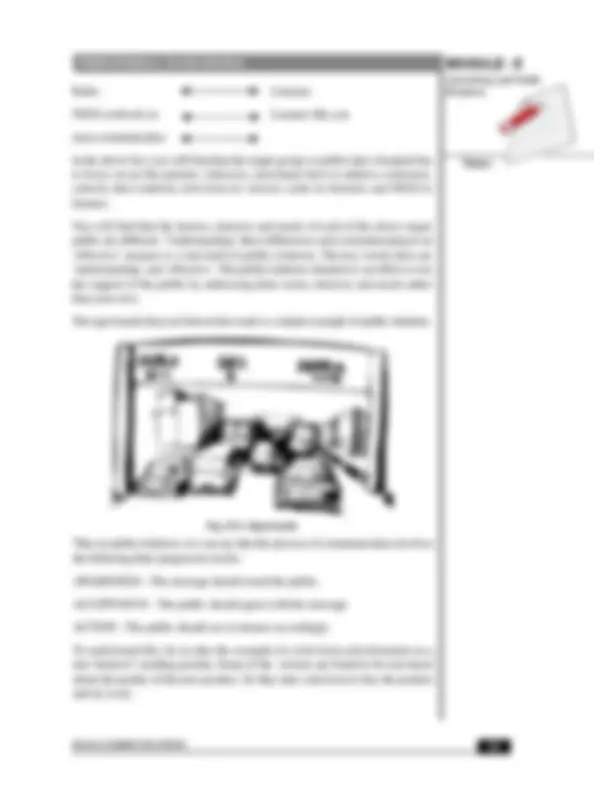
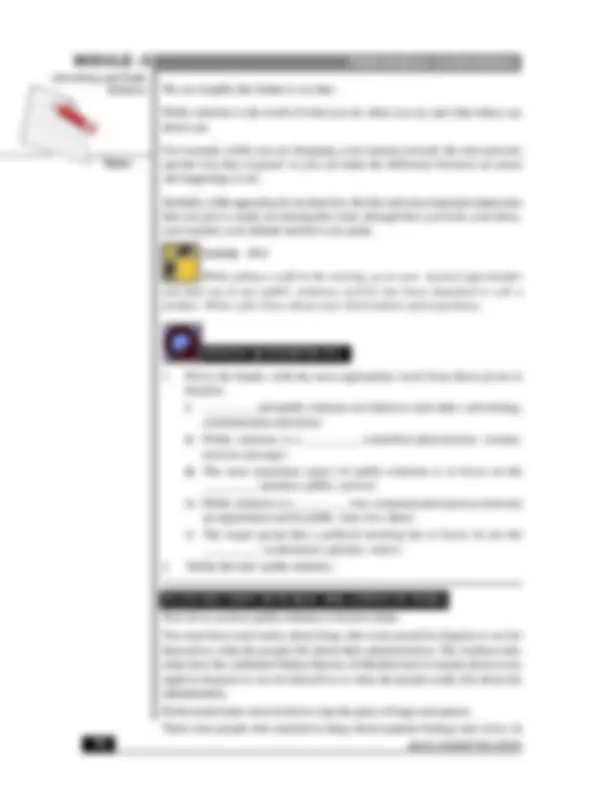
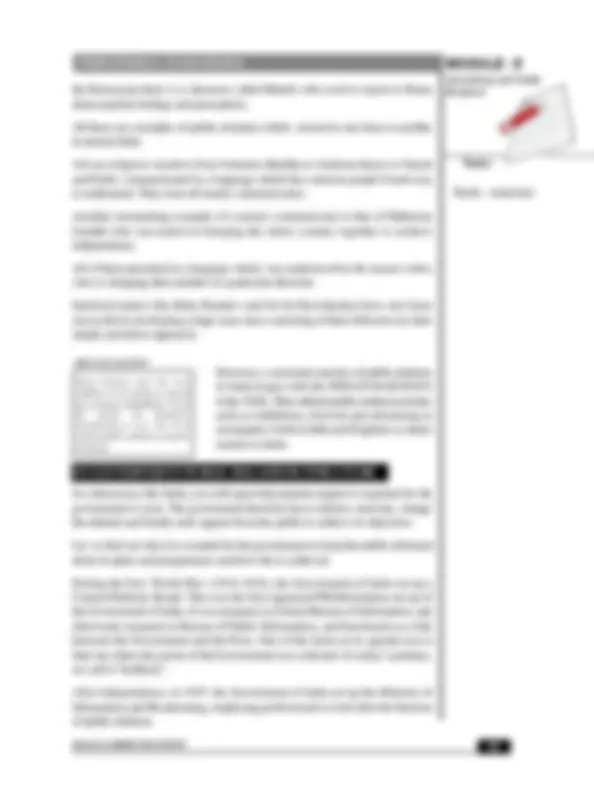
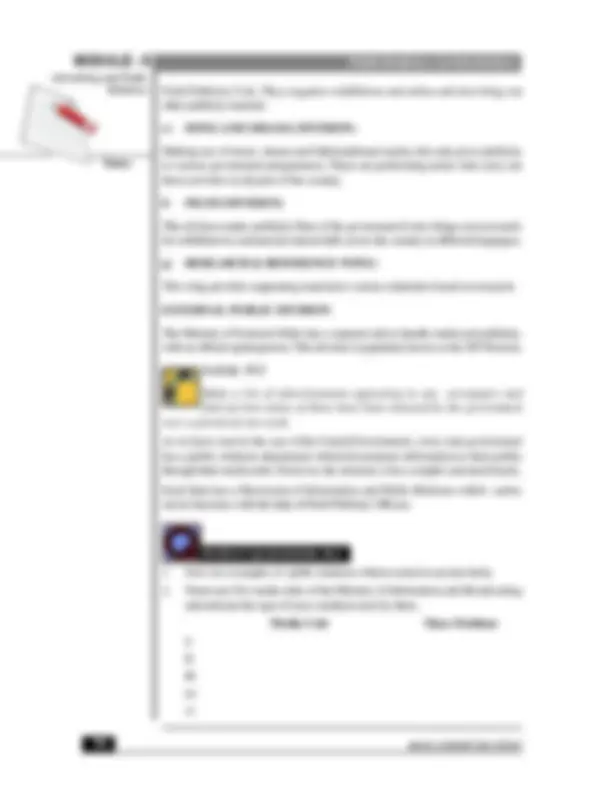
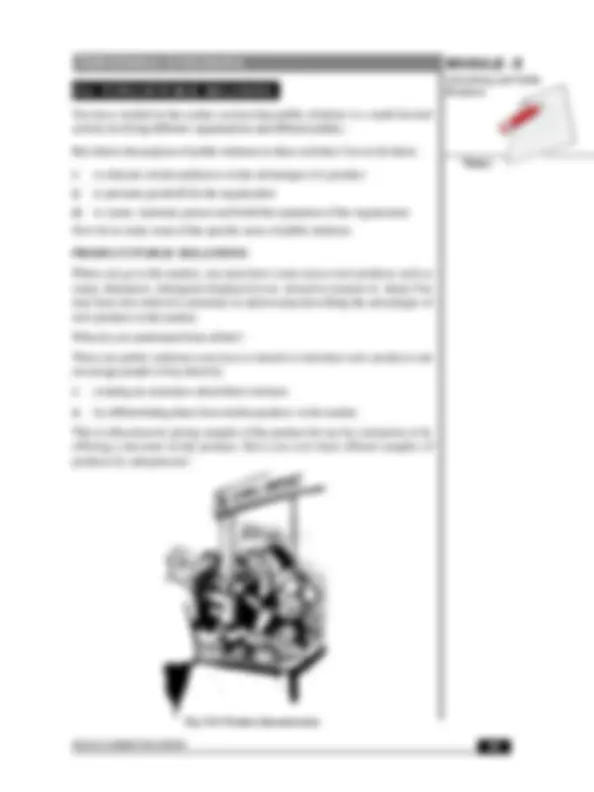
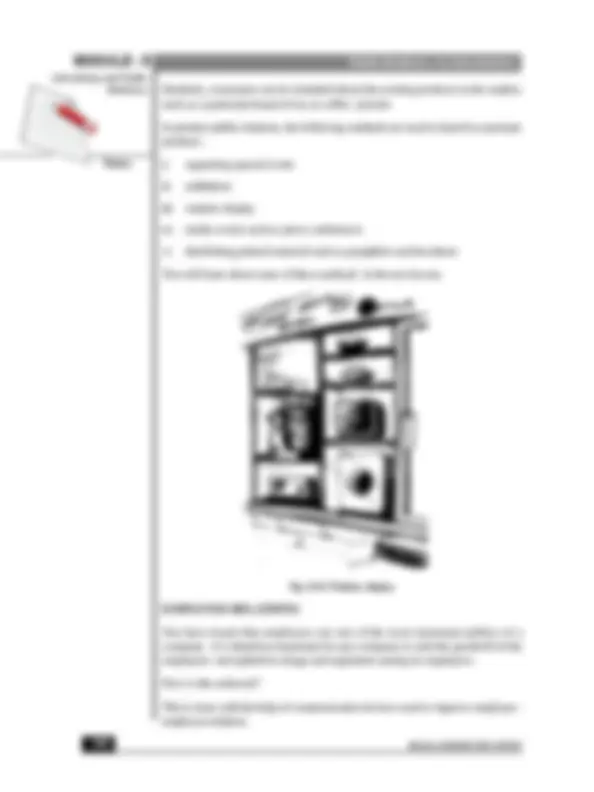
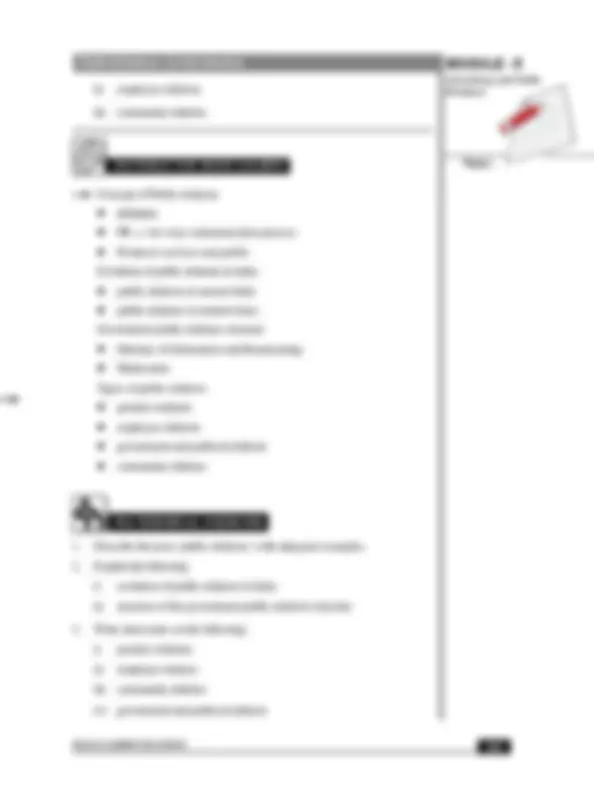
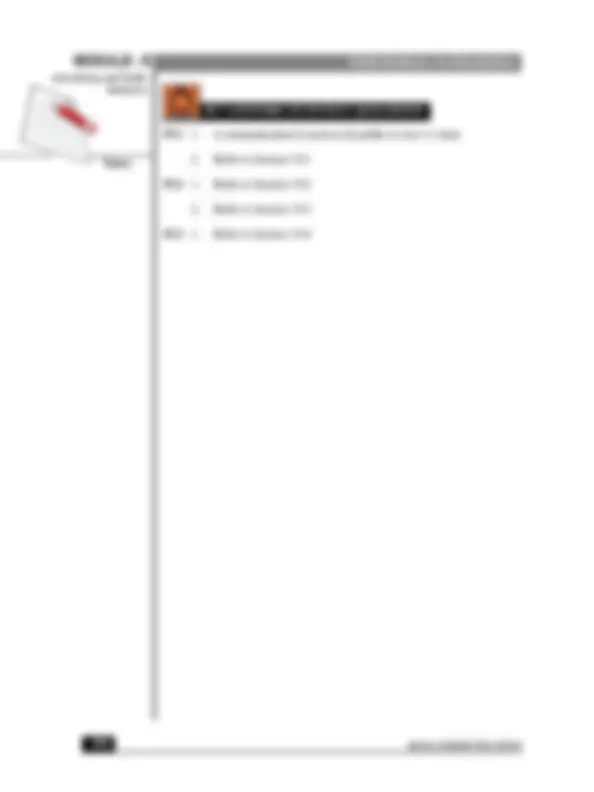


Study with the several resources on Docsity

Earn points by helping other students or get them with a premium plan


Prepare for your exams
Study with the several resources on Docsity

Earn points to download
Earn points by helping other students or get them with a premium plan
Community
Ask the community for help and clear up your study doubts
Discover the best universities in your country according to Docsity users
Free resources
Download our free guides on studying techniques, anxiety management strategies, and thesis advice from Docsity tutors
MASS-COMMUNICATION Advertising and Public Relations
Typology: Exercises
1 / 14

This page cannot be seen from the preview
Don't miss anything!









MASS-COMMUNICATION
Advertising and Public Relations
Notes
Public Relations–An Introduction
In your first module, you have learnt that communication, in one form or another, plays a significant part in our daily lives. We use it all the time, often without realizing it, depending on our needs or desires at that moment.
Let us consider a situation where a school going child is leaving home to catch a bus to reach school. What does the child look for? Yes, you are right. The bus stop. This is often found in the form of a shelter with bus routes/ numbers indicated on a board for the convenience of passengers.
Let us take another example: the sign boards you find on the roads give you directions on how to reach a particular place. Imagine how difficult it would have been without these sign boards.
These are all common examples of communication exercises for the benefit of the public.
In this lesson, you will learn about the definition and evolution of public relations and about different types of public relations.
After studying this lesson, you will be able to do the following :
z state the meaning of public relations ;
z explain the purpose of public relations with examples;
z trace the evolution of public relations;
z discuss the government public relations structure and strategy;
z differentiate between different areas of public relations.
MASS-COMMUNICATION
Notes
Advertising and Public Relations
Public Relations–An Introduction
Let us first try and understand the meaning of the term ‘public relations’.
You have already learnt that communication is a two- way process where messages and information sent are just as important as those that are received. The same applies to public relations. It is all about communicating with others, either through the spoken word or written word, or by using a visual or some other means.
Communication and public relations are linked to each other and play an important role in a wide variety of ways throughout our lives.
You have learnt in the first module that we can communicate by merely looking, by speaking, by our posture or by our actions. Communication, if used properly, can be used to inform,educate, reassure, evoke sympathy of situations as and when they occur.
Thus we can say that:
Public relations involves: i) a two way communication process between an organisation and its public
ii) communication with a view to changing the mindsets of the public in a certain direction
We can therefore define public relations as a form of communication used to persuade or influence people using ethical means.
It is important to understand that communication here,i.e.in public relations is a receiver phenomenon. It is controlled not by the sender but rather by the receiver or, in other words, the audience. For e.g. if the speaker is gifted and delivers a speech effectively in Hindi but the audience does not understand Hindi, no real communication takes place.
Therefore, the most important aspect of public relations is to focus on the ‘key public’ or in other words, the people who will receive the communication. Let us consider the following list of products/services and public who use these products/services.
Product / Service Public
Hospitals Patients
Merchants Customers
Schools Students
Television Viewers
ethical : correct
MASS-COMMUNICATION
Notes
Advertising and Public Relations
Public Relations–An Introduction
We can simplify this further to say that :
Public relations is the result of what you do, what you say and what others say about you.
For example, while you are shopping, your manner towards the sales persons and the way they respond to you can make the difference between an actual sale happening or not.
Similarly, while appearing for an interview, the first and most important impression that you give is made on entering the room, through how you look, your dress, your manner, your attitude and how you speak.
Activity 19.
While taking a walk in the evening, go to your nearest supermarket and find out if any public relations activity has been launched to sell a product. Write a few lines about your observations and experience.
Now let us see how public relations evolved in India. You must have read stories about kings who went around in disguise to see for themselves what the people felt about their administration. The Arabian tales relate how the celebrated Sultan Haroon-Al-Rashid used to wander about every night in disguise to see for himself as to what the people really felt about his administration. Professional bards were invited to sing the glory of kings and queens. There were people who reported to kings about popular feelings and views. In
MASS-COMMUNICATION
Advertising and Public Relations
Notes
Public Relations–An Introduction
the Ramayana there is a character called Bhadro who used to report to Rama about popular feelings and perceptions.
All these are examples of public relations which existed in one form or another in ancient India.
All our religious teachers from Gautama Buddha to Sankaracharya to Nanak and Kabir communicated in a language which the common people found easy to understand. They were all master communicators.
Another outstanding example of a master communicator is that of Mahatma Gandhi who succeeded in bringing the entire country together to achieve independence.
All of them preached in a language which was understood by the masses with a view to changing their mindset in a particular direction.
Spiritual leaders like Baba Ramdev and Sri Sri Ravishankar have also been successful in developing a huge mass base consisting of their followers by their simple and direct approach.
However, a systematic practice of public relations in India began with the INDIAN RAILWAYS in the 1920s. They utilized public relation activities such as exhibitions, festivals and advertising in newspapers, both in India and England, to attract tourists to India.
19.3 GOVERNMENT PUBLIC RELATIONS STRUCTURE
In a democracy like India, you will agree that popular support is required for the government to exist. The government therefore has to inform, motivate, change the attitude and finally seek support from the public to achieve its objectives.
Let us find out why it is essential for the government to keep the public informed about its plans and programmes and how this is achieved.
During the first World War (1914-1918), the Government of India set up a Central Publicity Board. This was the first organised PR/Information set-up of the Government of India. It was renamed as Central Bureau of Information, and afterwards renamed as Bureau of Public Information, and functioned as a link between the Government and the Press. One of the items on its agenda was to find out where the action of the Government was criticised. In today’s parlance, we call it “feedback”.
After Independence, in 1947, the Government of India set up the Ministry of Information and Broadcasting, employing professionals to look after the function of public relations.
DID YOU KNOW? King Ashoka sent his own children to Sri Lanka to spread the message of Buddhism. From his angle, his daughter Sanghamitra was the first woman public relations executive in history.
Bards - musicians
MASS-COMMUNICATION
Advertising and Public Relations
Notes
Public Relations–An Introduction
A look at the chart given below will tell you about the type of mass medium used by each of the above media units for their functions.
Media Unit Mass medium used
Details about some of the government media units are given below: -
a) PRESS INFORMATION BUREAU (PIB):
As the name suggests, this organization gives official information to the press on the print media. The officials of this media unit regularly issue press releases on various activities/developments and news regarding a particular department. Every ministry has a separate information officer who provides information to the PIB. The head of PIB, the Principal Information Officer (PIO) is the official spokesperson of the Government of India.
b) DIRECTORATE OF ADVERTISING AND VISUAL PUBLICITY (DAVP):
The DAVP is responsible for all media publicity and campaigns for the Central Government. It also releases advertisements to various media like newspapers, magazines, radio and television for central ministries and departments.
c) PHOTO DIVISION:
The job of the Photo Division is to take photographs on various aspects of the government and make these available to the media. For example, if anyone wants an official photograph of the President, the Photo Division provides this.
d) FIELD PUBLICITY UNIT:
Publicity of various government programmes and projects is provided by the
MASS-COMMUNICATION
Notes
Advertising and Public Relations
Public Relations–An Introduction
Field Publicity Unit. They organize exhibitions and melas and also bring out other publicity material.
e) SONG AND DRAMA DIVISION:
Making use of music, drama and folk/traditional media, this unit gives publicity to various government programmes. There are performing artists who carry out these activities in all parts of the country.
f) FILMS DIVISION:
This division makes publicity films of the government It also brings out newsreels for exhibition in commercial cinema halls across the country in different languages.
g) RESEARCH & REFERENCE WING:
This wing provides supporting material to various ministries based on research.
EXTERNAL PUBLIC DIVISION
The Ministry of External Affairs has a separate unit to handle media and publicity, with an official spokesperson. This division is popularly known as the XP Division.
Activity 19.
Make a list of advertisements appearing in any newspaper and find out how many of these have been released by the government over a period of one week. As we have seen in the case of the Central Government, every state government has a public relations department which disseminate information to their public through their media units. However, the structure is less complex and need based.. Each State has a Directorate of Information and Public Relations which carries out its functions with the help of Field Publicity Officers.
MASS-COMMUNICATION
Notes
Advertising and Public Relations
Public Relations–An Introduction
Similarly, consumers can be reminded about the existing products in the market, such as a particular brand of tea or coffee powder
In product public relations, the following methods are used to launch or promote products:
i) organizing special events
ii) exhibitions
iii) window display iv) media events such as press conferences
v) distributing printed material such as pamphlets and brochures
You will learn about some of these methods in the next lesson.
Fig. 19.4: Window display
EMPLOYEE RELATIONS
You have learnt that employees are one of the most important publics of a company. It is therefore important for any company to earn the goodwill of the employees and uphold its image and reputation among its employees.
How is this achieved?
This is done with the help of communication devices used to improve employer– employee relations.
MASS-COMMUNICATION
Advertising and Public Relations
Notes
Public Relations–An Introduction
Let us list some of them..
z newsletters giving vital information on the activities of the company
z bulletin boards displaying and appreciating the performance of employees
z organizing special events like picnics for employees and their families
z providing incentives, like cash prizes or gifts, for employees
z opportunities to continue education for employees and their family members
GOVERNMENT AND POLITICAL RELATIONS
Elections are held to choose representatives of people to run the government. This is done by a process of voting in which the people participate.
Let us see how public relations is utilized for political purposes to attract votes.
In order to gain the confidence of the people and persuade them for their votes, campaigns and meetings are organized.
rally : public meeting
Fig. 19.5: Political rally
You have seen public meetings being held in your locality where leaders talk about the achievements of their political party and encourage people to vote for them.
Posters and hoardings are erected at public places to attract the attention of the public.
MASS-COMMUNICATION
Advertising and Public Relations
Notes
Public Relations–An Introduction
ii) employee relations
iii) community relations
Concept of Public relations z definition z PR a two way communication process z Products/ services and public Evolution of public relations in India z public relations in ancient India z public relations in modern times Government public relations structure z Ministry of Information and Broadcasting z Media units Types of public relations z product relations z employee relations z government and political relations z community relations
i) evolution of public relations in India ii) structure of the government public relations structure
i) product relations ii) employee elations iii) community relations iv) government and political relations
MASS-COMMUNICATION
Notes
Advertising and Public Relations
Public Relations–An Introduction
19.1 1. i) communication ii) receiver iii) public iv) two v) voters
19.2 1. Refer to Section 19.
19.3 1. Refer to Section 19.